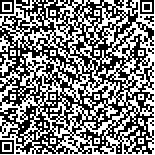于广周,高立功,董书理,等.基于氧化应激探讨不同压力的高压氧治疗联合动脉溶栓对急性缺血性脑卒中患者的影响[J].中华物理医学与康复杂志,2025,47(6):514-518
扫码阅读全文

|
| 基于氧化应激探讨不同压力的高压氧治疗联合动脉溶栓对急性缺血性脑卒中患者的影响 |
|
| |
| DOI:10.3760/cma.j.cn421666-20240909-00728 |
| 中文关键词: 急性缺血性脑卒中 动脉溶栓 高压氧 压力 氧化应激 |
| 英文关键词: Ischemia Stroke Thrombolysis Hyperbaric oxygen Oxidative stress |
| 基金项目: |
|
| 摘要点击次数: 1467 |
| 全文下载次数: 1375 |
| 中文摘要: |
| 目的 基于氧化应激探讨不同压力的高压氧治疗联合动脉溶栓对急性缺血性脑卒中患者的影响。 方法 选取急性缺血性脑卒中患者166例,按照随机数字表法将其分为0.15 MPa组(41例)、0.2 MPa组(42例)、0.25 MPa组(40例)、0.3 MPa组(43例)。所有患者均接受动脉溶栓及高压氧治疗,0.15 MPa组、0.2 MPa组、0.25 MPa组、0.3 MPa组的高压氧治疗压力分别为0.15 MPa、0.2 MPa、0.25 MPa、0.3 MPa。治疗前、治疗14 d后(治疗后),采用美国国立卫生研究院卒中量表(NIHSS)评定4组患者的脑神经功能,采用硫代巴比妥酸法(TBA)、超氧化物歧化酶(SOD)底物法、酶联免疫吸附法、免疫荧光发光法、化学发光免疫分析法分别测定4组患者的血清丙二醛(MDA)水平、SOD水平、总抗氧化能力(TAC)、白细胞介素-1β(IL-1β)及肿瘤坏死因子α(TNF-α)水平。 结果 治疗后,4组患者的NIHSS评分均较组内治疗前降低(P<0.05),0.2 MPa组、0.25 MPa组、0.3 MPa组的NIHSS评分均较0.15 MPa组低(P<0.05)。4组患者治疗后的MDA、SOD、TAC、IL-1β、TNF-α水平均较组内治疗前改善(P<0.05),其中0.2 MPa组治疗后的MDA水平[(6.20±0.84)mmol/L]、SOD水平[(105.21±12.25)mmol/L]、TAC水平[(5.27±0.55)U/ml]、IL-1β水平[(7.10±1.77)ng/L]、TNF-α水平[(6.12±1.77)ng/L],及0.25 MPa组治疗后的MDA水平[(6.15±0.72)mmol/L]、SOD水平[(107.15±12.34)mmol/L]、TAC水平[(5.31±0.56)U/ml]、IL-1β水平[(7.05±1.73)ng/L]、TNF-α水平[(6.08±1.80)ng/L]改善较为优异(P<0.05)。0.2 MPa组与0.25 MPa组治疗后上述指标比较,差异均无统计学意义(P>0.05)。治疗期间,0.15 MPa组、0.2 MPa组、0.25 MPa组均无不良反应发生,0.3 MPa组有4例患者出现不良反应(耳鸣、耳痛、耳部堵塞感)。 结论 高压氧联合动脉溶栓治疗可改善急性缺血性脑卒中患者的脑神经功能,调节机体氧化应激水平,降低炎症反应,其中高压氧压力为0.2 MPa、0.25 MPa时的疗效较好。 |
| 英文摘要: |
| Objective To explore the effect in terms of oxidative stress of combining hyperbaric oxygen (HBO) therapy with arterial thrombolysis in treating acute ischemic stroke. Methods A total of 166 ischemic stroke survivors were divided into a 0.15MPa group (41 cases), a 0.2MPa group (42 cases), a 0.25MPa group (40 cases), and a 0.3MPa group (43 cases), using a random number table. All received arterial thrombolysis and HBO therapy at the relevant pressure for 14 days. Before and after the treatment, all were assessed using the National Institutes of Health Stroke Scale (NIHSS), and in terms of serum levels of malondialdehyde (MDA) using the thiobarbituric acid method. Superoxide dismutase (SOD) was quantified by the SOD substrate method. Total antioxidant capacity (TAC) was assayed using enzyme-linked immunosorbent assays. Interleukin-1β (IL-1β) was quantified by immunofluorescence and chemiluminescence, and tumor necrosis factor-α (TNF-α) by chemiluminescence immunoassay. Results After the treatment there was a significant increase in all of the groups′ average NIHSS scores, but with that of the 0.15MPa group significantly higher than the other 3 groups′ averages. The average MDA, SOD, TAC, IL-1β and TNF-α levels of all of the groups had also improved, especially the average MDA score, SOD level, TAC level, IL-1β level and TNF-α level of the 0.2MPa group. In the 0.25MPa group, the average MDA, SOD, TAC, IL-1β level and TNF-α levels had also improved significantly. There was, however, no significant difference in these measurements between the 0.2 and 0.25MPa groups. Conclusions HBO combined with arterial thrombolysis can improve neurological functioning, regulate oxidative stress, and reduce inflammatory responses in acute ischemic stroke. The best results are at an HBO pressure of 0.2 or 0.25MPa. |
|
查看全文
查看/发表评论 下载PDF阅读器 |
| 关闭 |
|
|
|